Bruges, Belgium
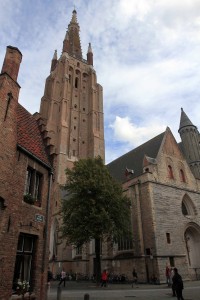
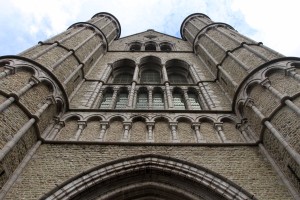
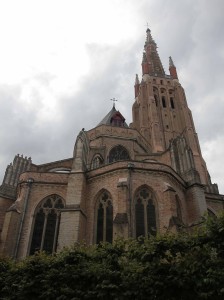
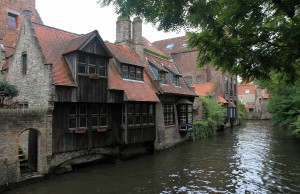
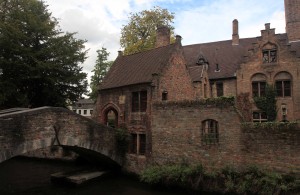
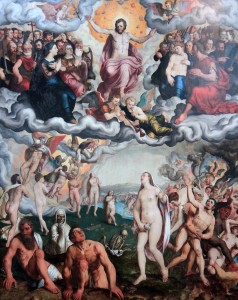
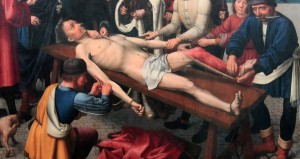
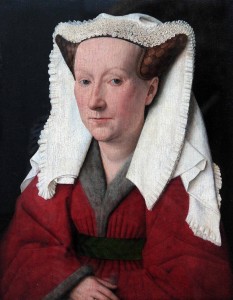
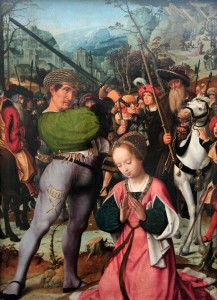
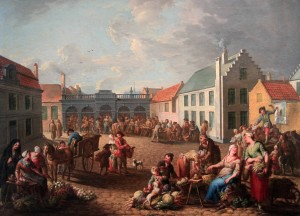
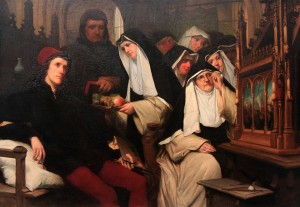
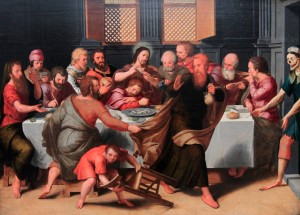
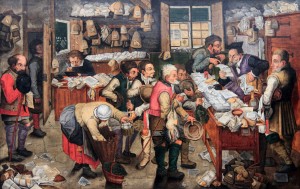
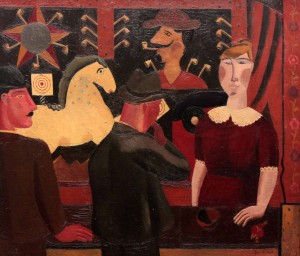
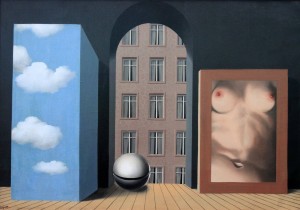
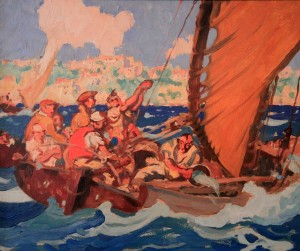
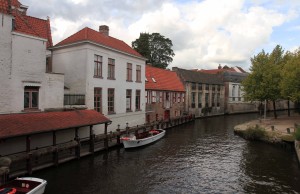
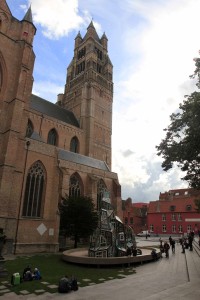
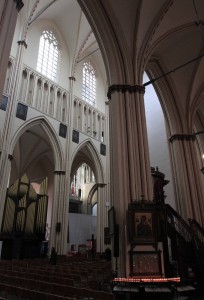
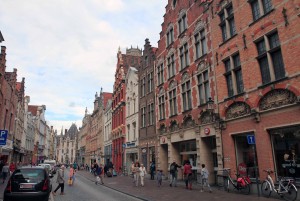
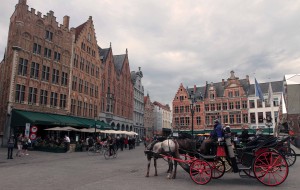
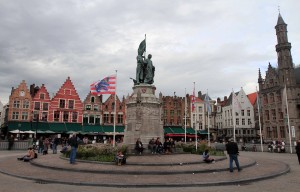
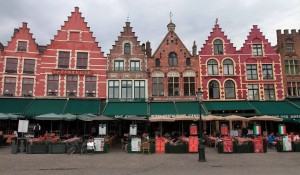
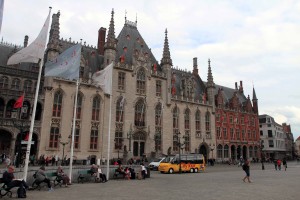
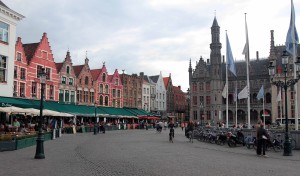
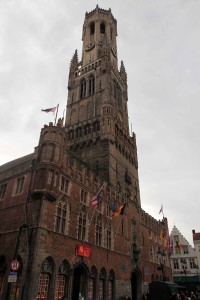
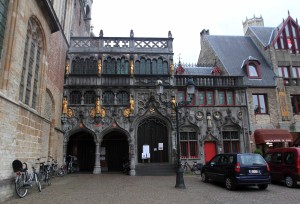
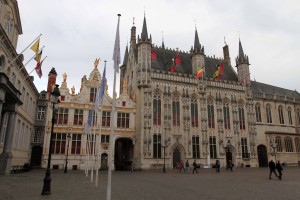
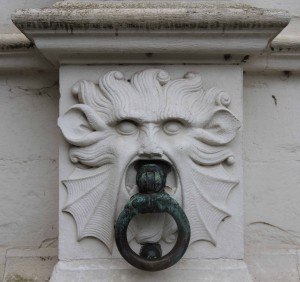
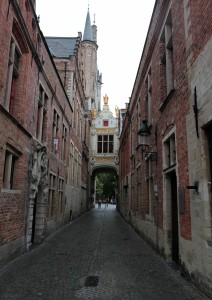
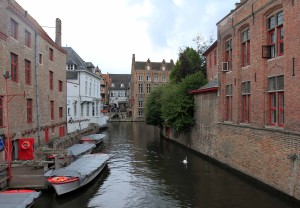
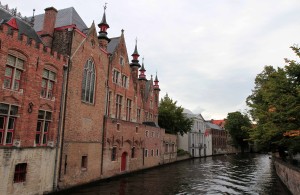
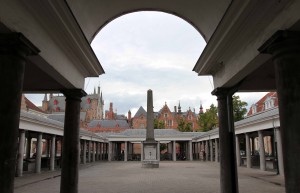
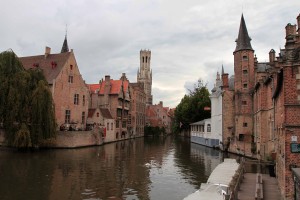
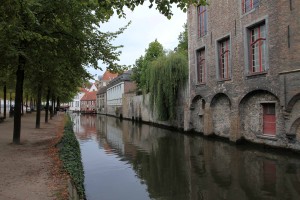
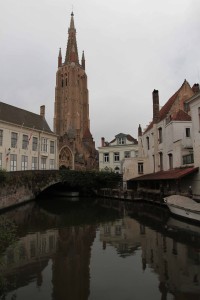
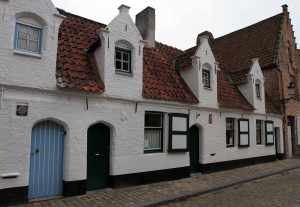
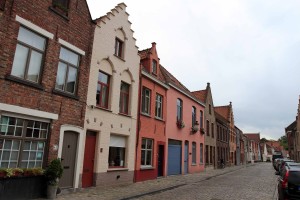
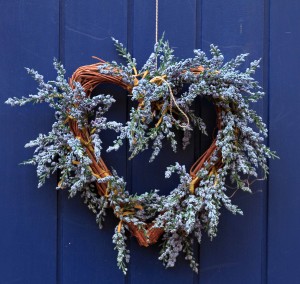
I woke up today around 11:00, showered, dressed, and got ready to see Bruges (I also grabbed my umbrella since it was raining on and off). Next, I bought lunch at the Subway located a short distance from the hotel and railway station – it was a tuna sub. I brought the lunch back to my room, ate it, and then waited around in my room and did not leave the hotel until around 14:00, after the rain had momentarily ceased. I then walked in to the historic city and made my way northward to the center. I passed by many lovely buildings, most of which were centuries old. I made my way to the Church of Our Lady, a Gothic church that dates from the thirteenth-century AD. I entered inside the church, but there wasn’t a whole lot to see thanks to renovations taking place and a large white wooden wall cutting off most of the church from the viewing public. After walking around and seeing what I could, I exited the church and continued on. Next, I walked to the Groeningemuseum, paid for my ticket, and entered inside. I walked through the different rooms in the museum and studied the paintings inside. The museum contains many important works by Belgian and Flemish painters that were created over the past six centuries; paintings by Jan van Eyck, Gerard David, Hieronymus Bosch, Hugo van der Goes, Adriaen Isenbrandt, and René Magritte are included in the museum’s permanent collection. After taking in all the art, I exited the Groeningemuseum and walked to the nearby Arenthuis Museum (since I was granted free admission on the same ticket). This museum had more modern art, as well as some drawings and paintings from the twentieth-century AD that showcased some real talent. After walking around this museum fairly quickly, I exited the building and continued on my journey through historic Bruges. I walked by De Dijver Park and over to the Sint-Salvator Cathedral, the main church of the city, which dates back to the tenth-century AD. I entered inside the cathedral and looked around – there were several frescoed sarcophagi for earlier Christians located below the floor, under protective glass. Next, I walked through several streets in Bruges, admiring the different houses and their Belgian architecture. I then walked to the central square with its fountain and statues before returning to the more historic part of the city. I reached the Market Square (the “Markt”), which is surrounded by the Belfry of Bruges, Provincial Court, and many other historic buildings. Nearby, a short walk east of the square, is the Basilica of the Holy Blood and Bruges City Hall at Burg Square – this is where I walked to next. It was too late to enter inside the Basilica of the Blood (named so on account of the relic contained within, a phial that encloses a cloth with the blood of Jesus Christ on it), so I enjoyed the architecture outside and the relatively empty square. I then continued on my trek through history, passing over a canal, De Dijver Park, a fish market (empty and cleaned for the day), and – of course – many fine examples of Gothic Belgian architecture. As evening neared, I traveled south, back to my hotel. I stopped at the Subway just outside the railway station, bought an Italian BMT for dinner, brought it back to my room, and devoured it in privacy. I then relaxed, taking it easy until nightfall, when I eventually went to sleep.
